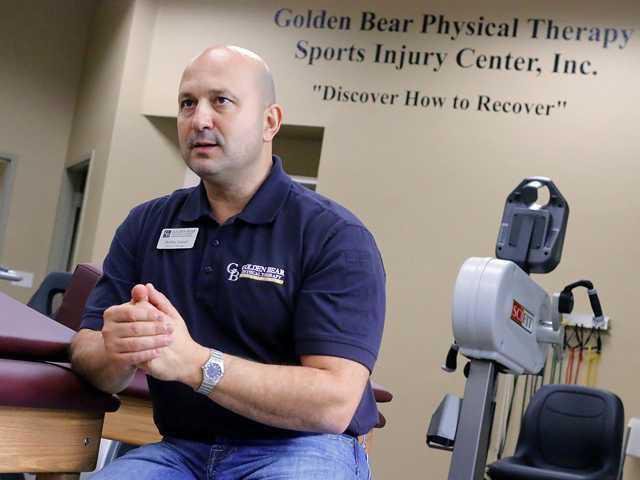
Women’s Health Physical Therapy
When it comes to physical therapy, most people think of it as a treatment for orthopedic injuries or post-surgical recovery. However, there’s an important and specialized branch of physical therapy that focuses on women’s health, specifically addressing pelvic floor issues. Pelvic floor physical therapy is a valuable resource for women of all ages who experience a range of conditions related to the pelvic region. In this blog post, we’ll explore the significance of women’s health physical therapy and how it can help address pelvic floor issues.
Understanding the Pelvic Floor
The pelvic floor is a group of muscles, ligaments, and connective tissues that form a hammock-like structure at the base of the pelvis. This complex network of muscles plays a vital role in various functions, including:
- Supporting pelvic organs: The pelvic floor supports the bladder, uterus, and rectum.
- Controlling bowel and bladder function: It helps regulate urination and bowel movements.
- Stabilizing the spine and pelvis: The pelvic floor muscles work in conjunction with the abdominal and back muscles to maintain stability in the lower back and pelvis.
- Contributing to sexual function: These muscles play a role in sexual arousal, orgasm, and overall sexual satisfaction.
Common Pelvic Floor Issues
Despite their importance, pelvic floor issues are relatively common among women. Some of the most common conditions and symptoms associated with pelvic floor dysfunction include:
1. Urinary Incontinence:
- This is the involuntary leakage of urine, which can occur during activities like sneezing, laughing, or exercising.
2. Pelvic Organ Prolapse:
- This condition occurs when one or more pelvic organs (such as the bladder, uterus, or rectum) descend into the vaginal canal due to weak pelvic floor muscles.
3. Pelvic Pain:
- Pelvic pain can be chronic and can manifest as discomfort or pain in the lower abdomen, pelvis, or perineal area.
4. Dyspareunia:
- Dyspareunia refers to pain during sexual intercourse, which can be caused by pelvic floor muscle dysfunction.
5. Constipation:
- Pelvic floor issues can lead to difficulty with bowel movements and chronic constipation.

The Role of Women’s Health Physical Therapy
Women’s health physical therapy, specifically pelvic floor physical therapy, is designed to assess, diagnose, and treat these pelvic floor issues. Here’s how physical therapists specializing in this area can help:
1. Comprehensive Assessment:
- A pelvic floor physical therapist conducts a comprehensive assessment to evaluate the function and strength of the pelvic floor muscles. This assessment may include internal and external examinations, as well as discussions about symptoms and medical history.
2. Individualized Treatment Plans:
- Based on the assessment, physical therapists create personalized treatment plans tailored to the specific needs and goals of the patient.
3. Pelvic Floor Exercises:
- Physical therapists teach patients how to perform pelvic floor exercises (often referred to as Kegel exercises) to strengthen and tone the pelvic floor muscles.
4. Manual Therapy:
- Manual therapy techniques, such as myofascial release and trigger point therapy, can be used to address muscle tension and pain in the pelvic region.
5. Biofeedback:
- Biofeedback is a technique that provides real-time feedback on muscle function, helping patients learn how to control and strengthen their pelvic floor muscles.
6. Relaxation Techniques:
- Some patients may experience pelvic pain or muscle tension due to anxiety or stress. Physical therapists may incorporate relaxation techniques to alleviate these symptoms.
7. Bladder and Bowel Retraining:
- For conditions like urinary incontinence or constipation, physical therapists can provide guidance on retraining the bladder and bowel.
8. Education:
- Patients receive education on lifestyle modifications, dietary changes, and strategies to manage their specific condition.
Who Can Benefit from Pelvic Floor Physical Therapy?
Pelvic floor physical therapy is not limited to a particular age group or stage in life. It can benefit women at various life stages, including:
1. Pregnancy and Postpartum:
- Pelvic floor physical therapy can help address issues related to pregnancy, prepare the pelvic floor for childbirth, and aid in postpartum recovery.
2. Menopause:
- Changes in hormone levels during menopause can affect pelvic floor health. Physical therapy can help manage symptoms like vaginal dryness and pelvic pain.
3. Athletes:
- Female athletes may experience pelvic floor dysfunction due to the demands of their sport. Physical therapy can help address and prevent these issues.
4. Reproductive Health:
- Women dealing with conditions like endometriosis or fibroids may benefit from pelvic floor physical therapy to manage associated pain and discomfort.
5. Chronic Pelvic Pain:
- Those suffering from chronic pelvic pain conditions like vulvodynia or interstitial cystitis can find relief through pelvic floor therapy.
Breaking the Stigma
Discussing pelvic floor issues can be uncomfortable for many women, but it’s essential to break the stigma surrounding these conditions. Seeking help from a qualified pelvic floor physical therapist can lead to significant improvements in quality of life and overall well-being.
Conclusion
Pelvic floor issues are more common than you might think, and they can significantly impact a woman’s life. Women’s health physical therapy, with its specialized focus on the pelvic floor, knee and back pain offers effective solutions to address these concerns. If you’re experiencing pelvic floor issues, don’t hesitate to seek help from a skilled pelvic floor physical therapist. By addressing these issues head-on, you can regain control of your pelvic health and enjoy a better quality of life.






